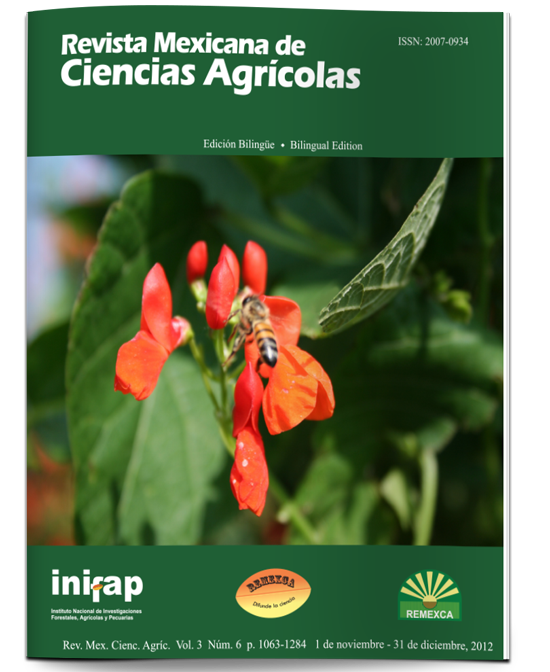Systems management and marketing of tamarind (Tamarindus indica L.) in three municipalities of Veracruz
DOI:
https://doi.org/10.29312/remexca.v3i6.1373Keywords:
marketing, backyard, value addedAbstract
Tamarind (Tamarindus indica L.) for its easy adaptation and resistance to drought is part of tropical agro-ecosystems as a food source for livestock and a complementary income of farmers. Nationally, the dynamics of production of tamarind has been modified, decreasing in the south and consolidated in Jalisco. The objective of this study was to identify management systems and marketing of tamarind in the municipalities of Soledad de Doblado, Manlio Fabio Altamirano and Paso de Ovejas, Veracruz and its relation to the dynamics of domestic production. Two questionnaires were applied in direct interviews with 92 producers and 37 local intermediaries selected with probability sampling technique of snowballing in 2008. We identif ied three systems: orchards, backyards and hedges, all with low levels of management. Most sell the fruit on the tree to intermediaries (52.8%), participating with 3.1% of final price, which made the sale of fruit in shell obtained 21.4% and those who sell the fruit, peeledobtained27.8%ofthefinalprice.Aproducerthattakes over more links has higher and better incomes; otherwise, the higher margins are obtained by the retailer that harvest, peels and collect the tamarind. We conclude that the dynamics of displacement of tamarind in the South responds to the lack of development in high-tech orchard, which keeps it as a product, which provides additional income or marginal producer.
Downloads
Downloads
Published
How to Cite
Issue
Section
License
The authors who publish in Revista Mexicana de Ciencias Agrícolas accept the following conditions:
In accordance with copyright laws, Revista Mexicana de Ciencias Agrícolas recognizes and respects the authors’ moral right and ownership of property rights which will be transferred to the journal for dissemination in open access. Invariably, all the authors have to sign a letter of transfer of property rights and of originality of the article to Instituto Nacional de Investigaciones Forestales, Agrícolas y Pecuarias (INIFAP) [National Institute of Forestry, Agricultural and Livestock Research]. The author(s) must pay a fee for the reception of articles before proceeding to editorial review.
All the texts published by Revista Mexicana de Ciencias Agrícolas —with no exception— are distributed under a Creative Commons License Attribution-NonCommercial 4.0 International (CC BY-NC 4.0), which allows third parties to use the publication as long as the work’s authorship and its first publication in this journal are mentioned.
The author(s) can enter into independent and additional contractual agreements for the nonexclusive distribution of the version of the article published in Revista Mexicana de Ciencias Agrícolas (for example include it into an institutional repository or publish it in a book) as long as it is clearly and explicitly indicated that the work was published for the first time in Revista Mexicana de Ciencias Agrícolas.
For all the above, the authors shall send the Letter-transfer of Property Rights for the first publication duly filled in and signed by the author(s). This form must be sent as a PDF file to: revista_atm@yahoo.com.mx; cienciasagricola@inifap.gob.mx; remexca2017@gmail.
This work is licensed under a Creative Commons Attribution-Noncommercial 4.0 International license.



